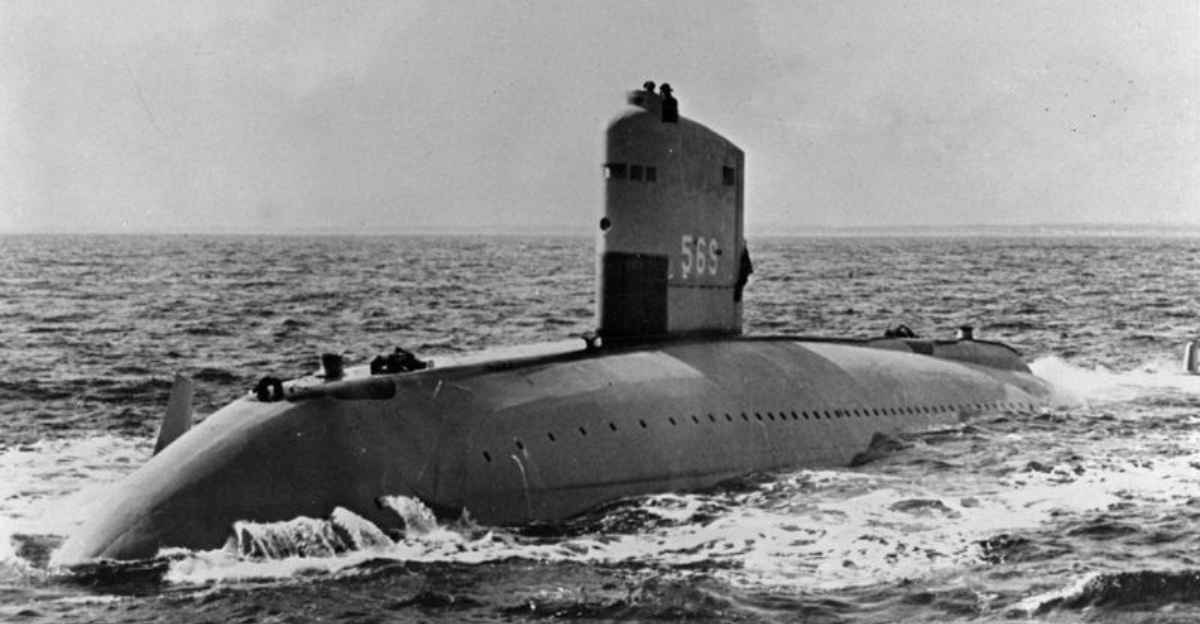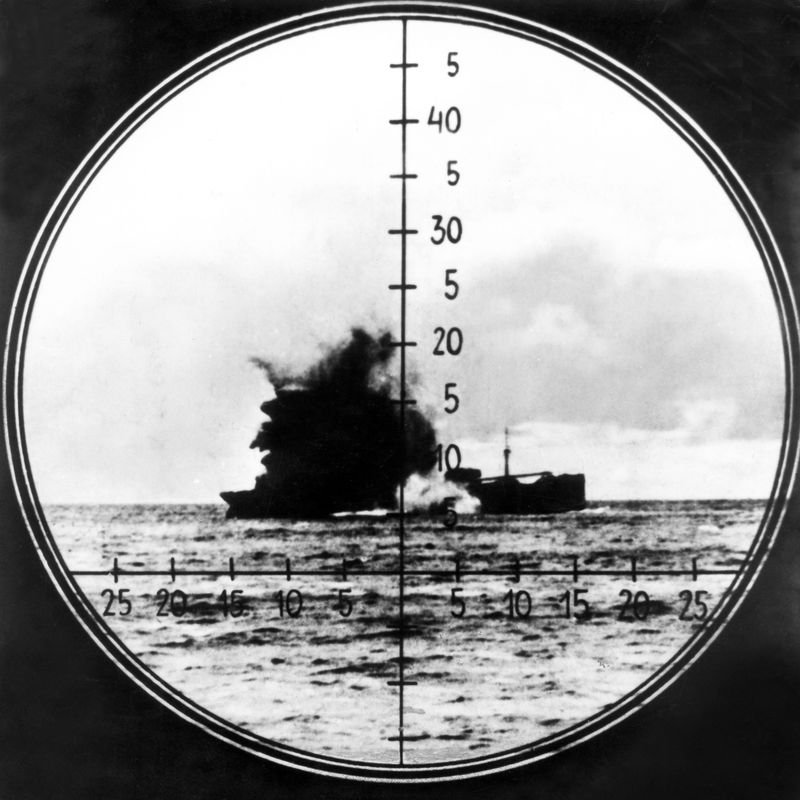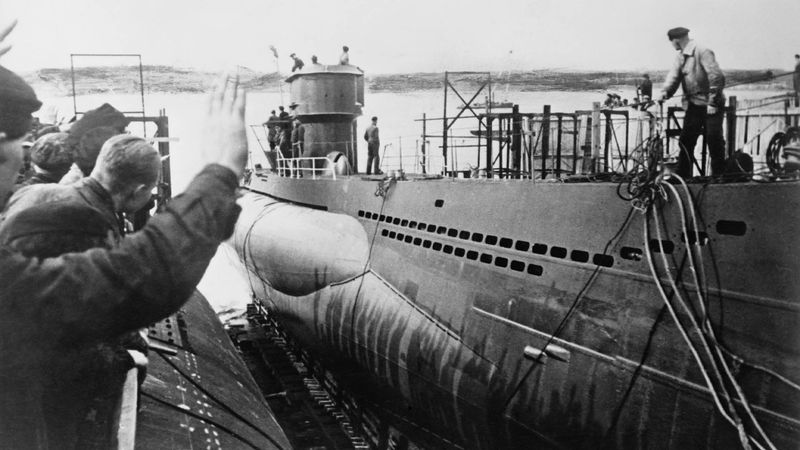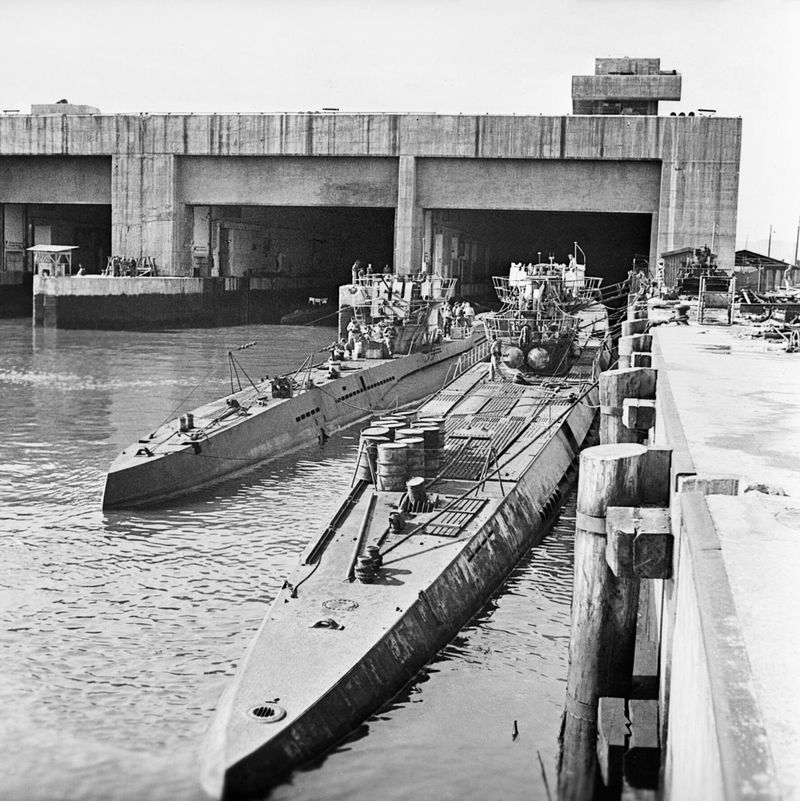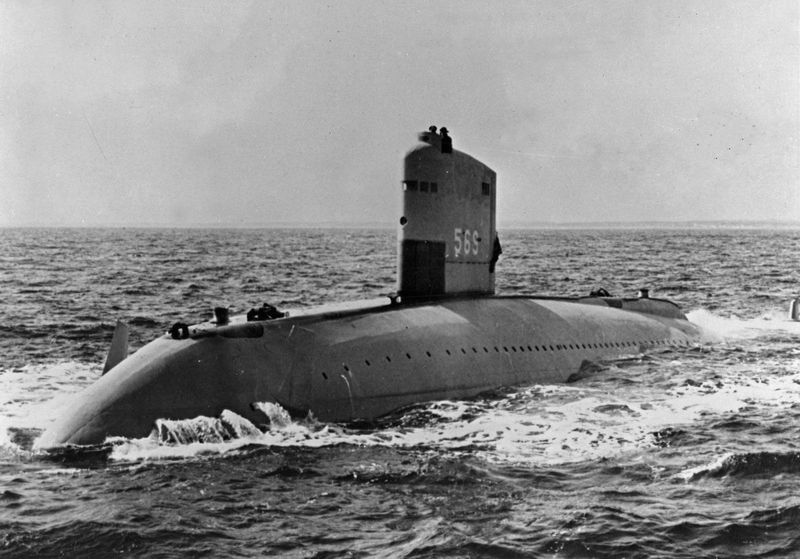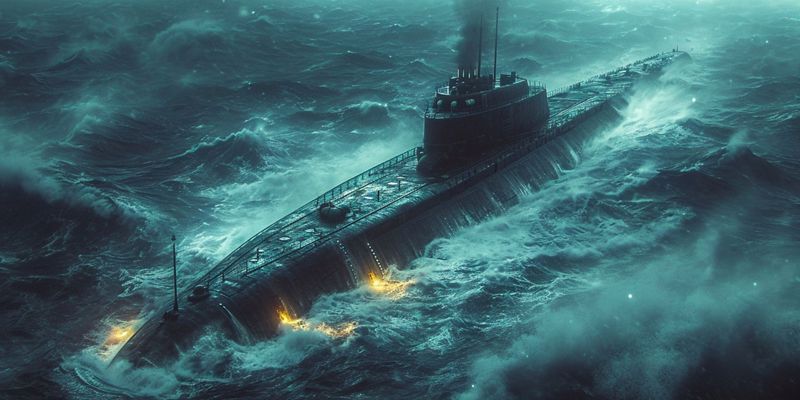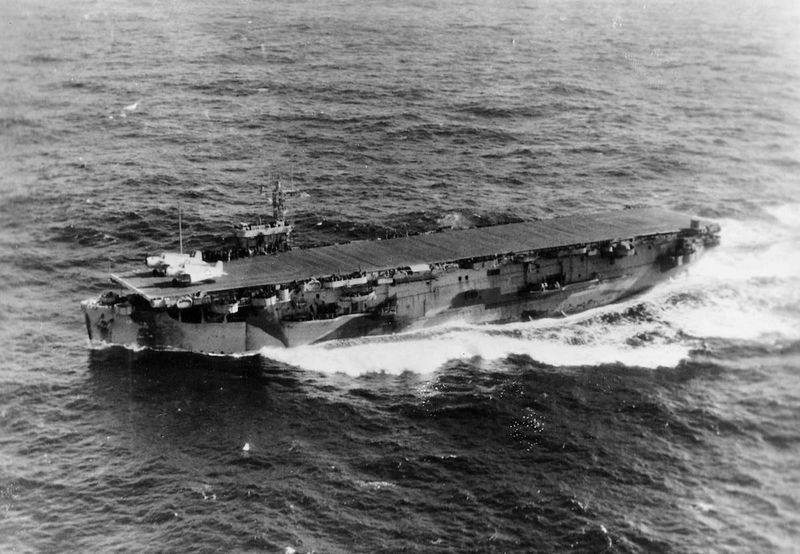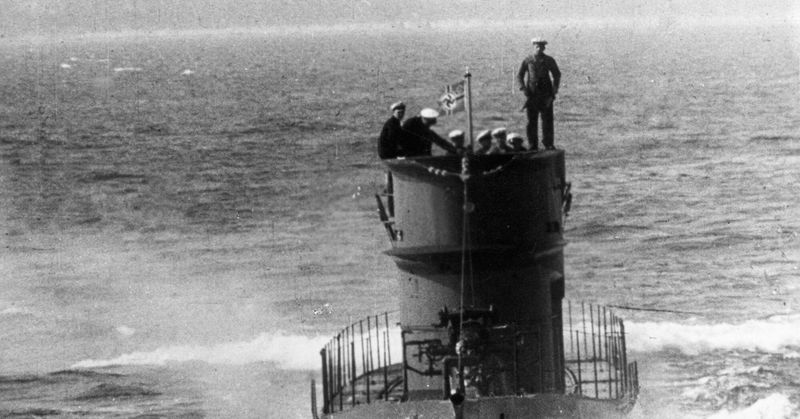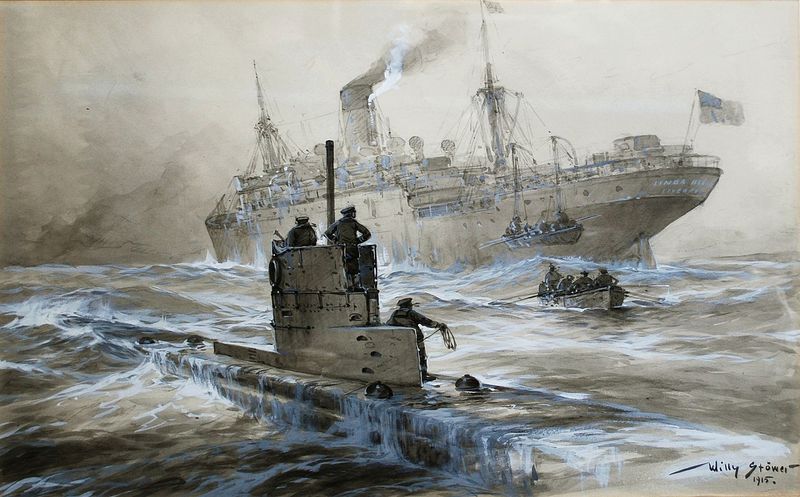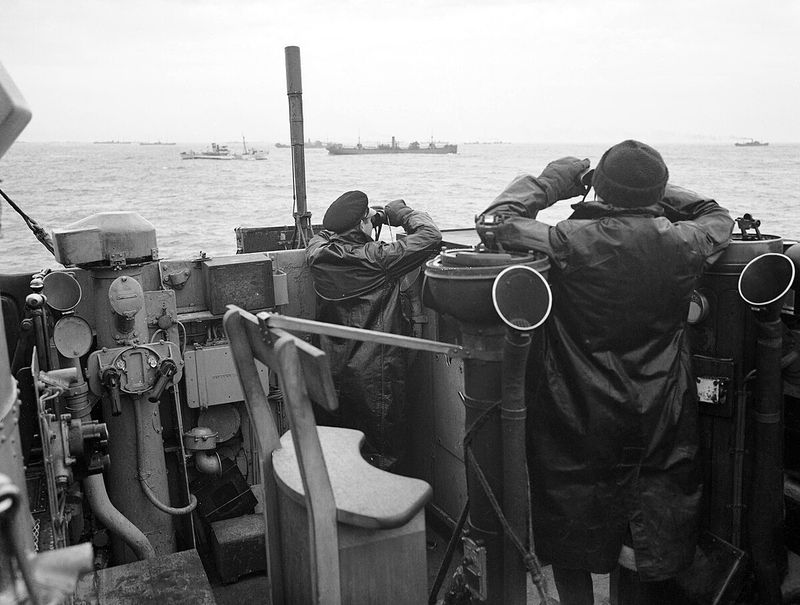Germany’s U-boats were once a terrifying force in naval warfare, but a series of critical missteps led to their downfall. From strategic blunders to technological failures, these mistakes ultimately sealed the fate of the once-feared submarine fleet.
1. Overreliance on the Wolfpack Strategy
Initially, the Wolfpack strategy proved deadly, with groups of submarines coordinating attacks on Allied convoys. However, as the war progressed, this tactic became predictable.
The Allies adapted by enhancing their defensive tactics and convoy systems, neutralizing the effectiveness of the U-boat packs. Additionally, the over-reliance on this singular approach limited Germany’s strategic options.
The lack of diversification in tactics meant that once the Allies cracked the code, the U-boats struggled to adapt. These changes rendered the once lethal Wolfpack strategy ineffective, exposing a critical German miscalculation.
2. Underestimating Allied Codebreakers
The Germans placed immense faith in the security of their Enigma-encrypted communications, believing them to be unbreakable. This confidence was misplaced, as skilled British codebreakers at Bletchley Park successfully cracked the codes.
This breakthrough allowed the Allies to anticipate U-boat movements, effectively avoiding attacks and countering German strategies. The German failure to appreciate the vulnerability of their communications led to devastating consequences.
The Allies now had the upper hand, with timely information that disrupted German operations. This underestimation proved to be a significant factor in the downfall of the U-boat campaign.
3. Failure to Anticipate Radar Advancements
In the early days, U-boats were adept at evading detection, particularly at night. However, the development of radar technology by the Allies changed the game. German forces were slow to respond to these technological advancements.
Radar allowed the Allies to detect submarines even during nighttime operations, making the U-boats easier targets. This slow adaptation to new technologies exposed the U-boats to increased risks, as they could no longer rely solely on stealth.
The failure to quickly integrate countermeasures to radar advances contributed significantly to the U-boats’ operational vulnerabilities.
4. Ignoring the Importance of Air Superiority
Despite their prowess in open waters, German U-boats faced increasing threats from the sky. The Allies deployed aircraft to patrol vast ocean areas, making it difficult for U-boats to operate undetected.
Without sufficient air cover, German submarines became vulnerable to aerial attacks. This lack of air superiority impaired their ability to conduct effective missions.
The Germans underestimated the strategic importance of controlling the skies, leading to a higher rate of U-boat losses. The increase in aircraft surveillance further diminished the element of surprise, a crucial component of submarine warfare.
5. Poorly Defended Refueling Stations
To sustain their operations across the vast Atlantic, U-boats were heavily reliant on supply submarines known as ‘milk cows.’ These vessels refueled and resupplied U-boats at sea, extending their missions.
However, their critical role made them prime targets for Allied forces. The Allies prioritized their destruction, severely impairing U-boat operations.
With the loss of these supply lines, German submarines faced logistical challenges, limiting their effectiveness and range. This oversight in securing supply lines proved costly, as it directly affected the operational capabilities of the U-boat fleet.
6. Delayed Introduction of New Technology
By the time Germany introduced advanced submarines like the Type XXI, the war was already turning against them. These new models featured improved speed and stealth capabilities, which could have revitalized the U-boat campaign.
Unfortunately, the delay in their deployment meant they arrived too late to alter the outcome of the war significantly. Production and deployment issues further hindered their impact.
The potential of these technological advancements was never fully realized. This delay highlighted Germany’s inability to effectively integrate new innovations into their existing strategies in a timely manner.
7. Ignoring the Threat of Sonar
As the Allies advanced their sonar technology, known as ASDIC, U-boats struggled to remain hidden. Germany underestimated the rapid development and effectiveness of sonar, failing to anticipate its impact.
Sonar allowed Allied ships to detect submarines underwater, a significant tactical advantage. The German response was inadequate, as countermeasures were either ineffective or introduced too late.
This oversight in assessing the threat of sonar technology contributed to the increased vulnerability of the U-boats. Their once stealthy operations were now compromised, leading to higher detection and destruction rates.
8. Failing to Adapt to Escort Carriers
The Allies’ introduction of escort carriers transformed Atlantic patrols, allowing for broader air coverage and increased U-boat detection. German forces were slow to respond to this strategic development.
Escort carriers armed with aircraft could effectively spot and attack submarines, reducing the U-boats’ ability to operate undetected. Germany failed to counter this with effective measures, leaving U-boats exposed.
The presence of escort carriers added another layer of complexity to the U-boats’ operational environment. This inability to adapt to changing naval tactics further weakened their effectiveness and contributed to their decline.
9. Overconfidence in Early Successes
In the war’s early years, U-boats achieved significant successes in sinking Allied shipping, leading to a sense of invincibility among German command. This overconfidence hindered their strategic flexibility.
Believing their tactics unbeatable, Germany delayed necessary adaptations as Allied defenses improved. The complacency from early victories meant critical opportunities for tactical evolution were missed.
This attitude prevented the proactive development of new strategies and technologies, leaving U-boats vulnerable to Allied advancements. Overconfidence became a barrier to innovation, ultimately contributing to the fleet’s downfall.
10. Poor Coordination Between Navy and Air Force
Germany’s Luftwaffe and Kriegsmarine often failed to collaborate effectively, operating in silos rather than as a cohesive force. This lack of coordination weakened their ability to present a united front against the Allies.
Without integrated strategies, both services missed opportunities for mutual support, which could have enhanced their operational effectiveness. The absence of collaborative planning limited the impact of their efforts.
This separation of air and naval operations meant that U-boats lacked essential air cover and support, further exposing them to Allied attacks. The disjointed approach was a significant strategic oversight.
11. Underestimating the Industrial Power of the Allies
While Germany struggled to replace their lost U-boats, the Allies harnessed their industrial capabilities to produce ships at an unprecedented rate. This industrial might overwhelmed the effectiveness of German attacks.
The rapid production of new vessels meant that Allied convoy systems became increasingly resilient, adapting faster than Germany could counter. This imbalance in production capabilities was underestimated by German command.
The Allies’ ability to replenish losses quickly and efficiently negated the impact of U-boat successes, contributing to their declining strategic effectiveness. Industrial power became a decisive factor in the maritime conflict.
12. Hitler’s Interference in Naval Strategy
Hitler’s focus on land warfare often led to the neglect of naval strategy. His interference in military decisions undermined the professional judgment of seasoned naval commanders.
By prioritizing resources for the army, naval innovations and strategies were sidelined. This lack of focus on the U-boat campaign weakened its potential impact.
Without adequate support and strategic vision, the U-boats were ill-equipped to deal with evolving Allied tactics. Hitler’s misplaced priorities and micromanagement of naval affairs played a significant role in the fleet’s eventual downfall.
